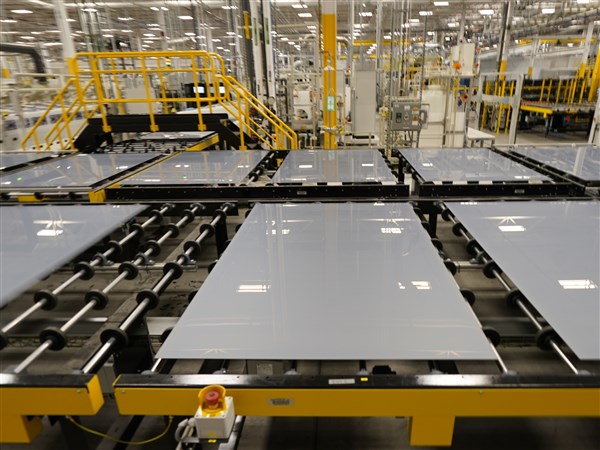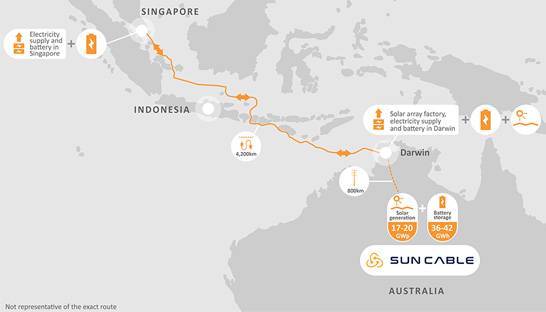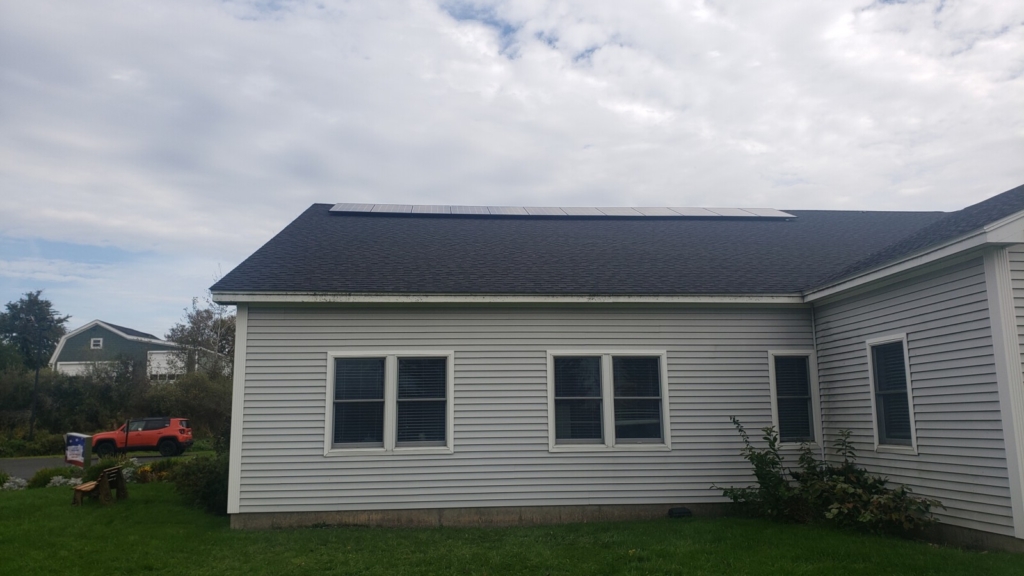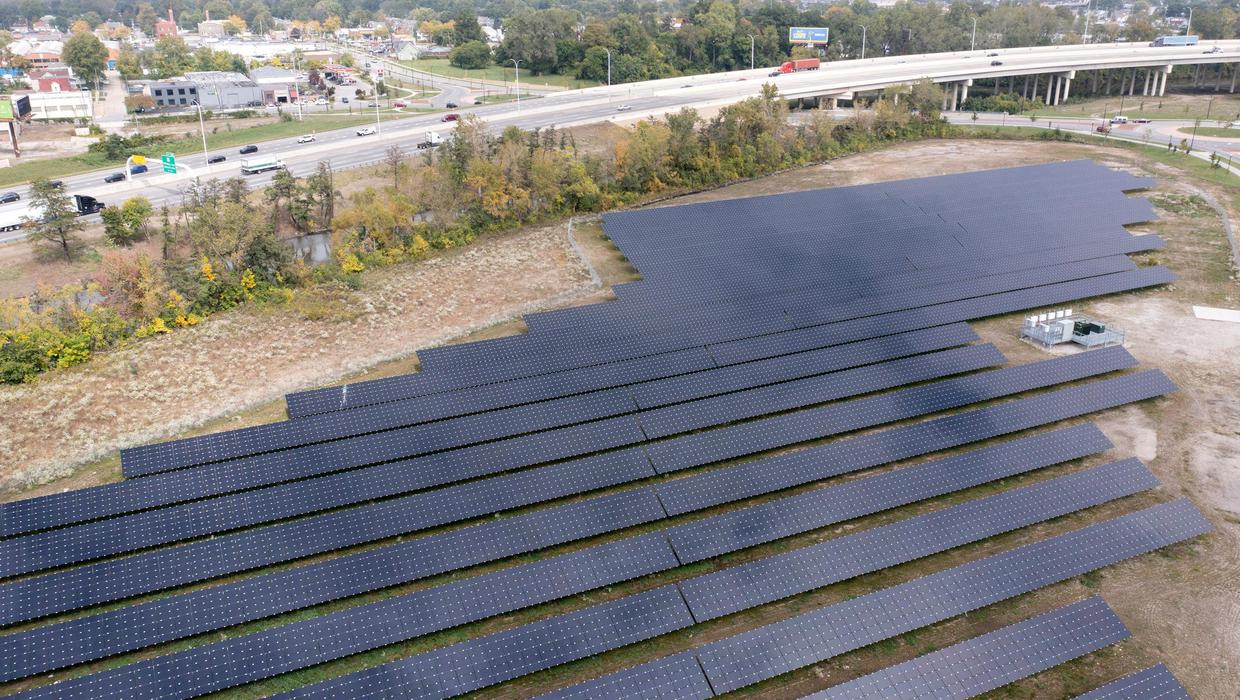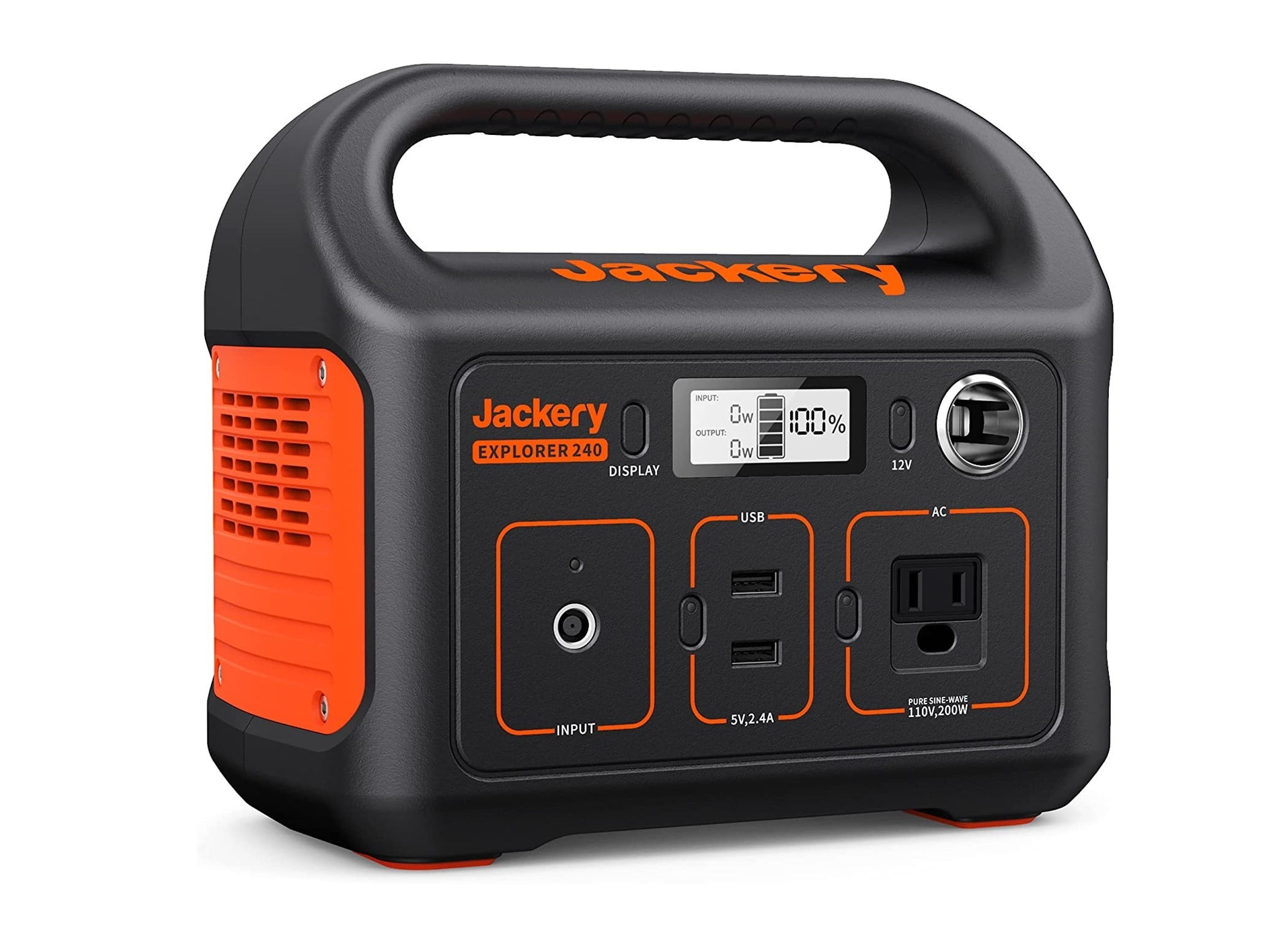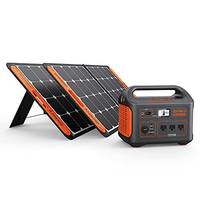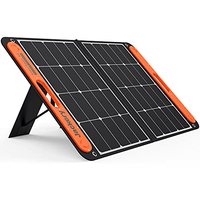Sunrun, PG&E to roll out 30-MW virtual power plant to support … Utility Dive
Solar Power
Mid-December hearing announced for Defiance County solar project
Consultancies selected for world’s largest solar energy infra project
One of the world’s most ambitious renewable energy ventures has taken its next step, with five consultancies selected for the Australia-Asia PowerLink project.
The delivery team for the groundbreaking $30 billion Australia-Asia PowerLink renewable energy project linking Northern Territory solar-generated electricity to Singapore has been named, with PwC and Marsh among the consultancies selected.
Once at full capacity, the ambitious Sun Cable project aims to deliver 3.2 gigawatts of dispatchable solar-generated electricity, harnessed from a vast 12,000 hectare solar farm north of Tennant Creek, and transported through 4,200 kilometres of submarine cable to Singapore.
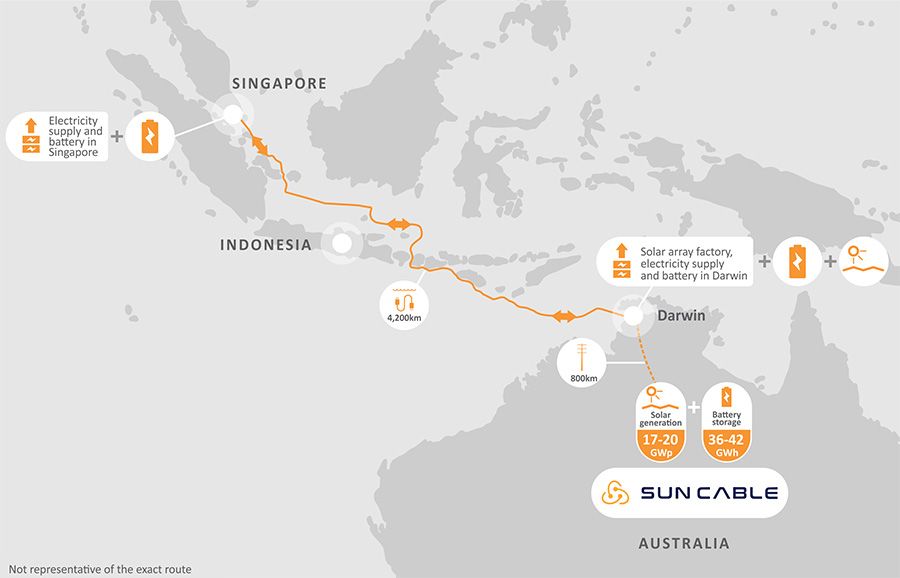
To put those numbers into perspective, the up to 20 GW of peak solar power generation is close to ten times greater than anything that currently exists, which will be supported by a 36-42 gigawatt-hours battery storage – Tesla’s famous big battery in South Australia has recently reached a capacity of 189 MWh.
Meanwhile, the 720-kilometres North Sea Link crossing the North Sea from Norway to the United Kingdom is currently the world’s longest HVDC subsea cable, at one sixth of the length of the Australia to Singapore link.
To help achieve this remarkable feat of engineering, Sun Cable – which has already received backing from two of Australia’s wealthiest billionaires in Mike Cannon-Brookes and Andrew Forrest – has now selected a consortium of international and local advisories as its Integrated Project Delivery Team, made up of PwC, insurance and risk giant Marsh, and global infrastructure, engineering and project management firms SMEC, Betchel and Hatch.
“We are so proud to be helping harness Australia’s rich sunshine to power thousands of businesses and communities across Australia and Singapore,” said Tom Seymour, CEO of PwC Australia, which will serve as project advisor. “This complex and ambitious project is unlike anything previously developed. Australia-Asia PowerLink will help solve Australia’s carbon emissions footprint, (and) provide once-in-a-lifetime economic opportunities for communities.”
With construction expected to get underway in late 2023 and supply to Singapore to kick-off in 2027 (serving up to 15 percent of the nation’s demand), the touted economic and environmental benefits of the venture include a projected $8 billion boost to the Australian economies and approximately 1,500 jobs during the construction phase (mainly in the and Northern Territory).
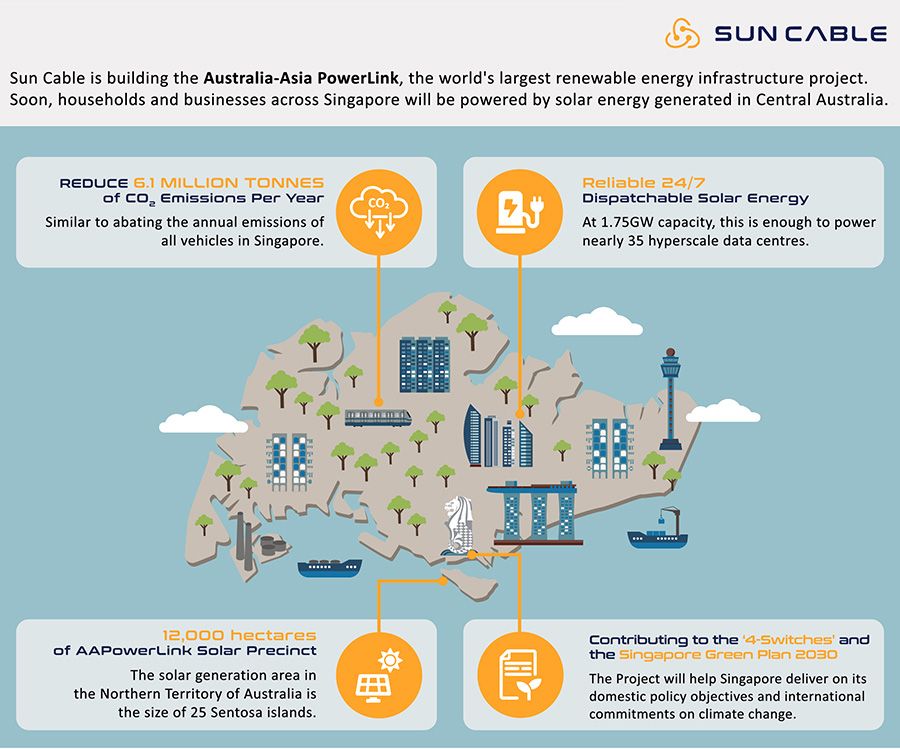
“By unlocking the vast, world-class solar, and land resources that Australia has available, Sun Cable is creating the pathway for a new export industry, generating up to $2 billion per annum in exports for Australia,” said Michael Gunner, Chief Minister of the Northern Territory Government.
Speaking on behalf of Marsh, which is providing risk management consultancy to the project, CEO of the Pacific region Nick Harris said: “This project deliver a large volume of renewable energy over a longer distance than ever before, which represents a seismic shift in the way Australia exports energy to the world. We are excited to be part of the team.”
The contribution to CO2 reduction goals is forecasted to be major, with modelling showing a 6 million tonnes per year reduction in Singapore’s carbon emissions, with a total abatement of 8.6 million tonnes.
“Surbana Jurong is very excited to be part of this multi-national project development team whose vision is in step with Singapore’s goal to intensify solar energy deployment,” said Wong Heang Fine, CEO of Surbana Jurong, which purchased project advisors SMEC for S$400 million in 2017.
James Phillis, CEO of SMEC for Australia and New Zealand added: “The Australia-Asia PowerLink will be the world’s largest solar energy infrastructure network and will be a game-changer for the renewable energy sector worldwide. As a member of the project delivery team, SMEC is excited to be a critical force in bringing this project to life.”
Solar panels installed on Rockland City Hall roof – Knox County VillageSoup
Solar panels have been installed on the roof of Rockland City Hall.
Ten panels that can produce 3,000 watts were installed this week by ReVision Energy. ReVision agreed to install the panels for free as a demonstration project for Rockland’s participation in a solar farm in Skowhegan.
The Rockland City Council voted 5-0 at its April 13, 2020 meeting to authorize the city manager to negotiate and enter into a contract with Aligned Climate Capital to purchase solar power from Revision Energy’s solar project in the Somerset County city.
Related Stories
Politicians talk the climate talk, but they didn’t mention solar power in the Budget
Winter is coming – and both consumers and businesses are understandably very worried.
hroughout the year, we have seen price increase after price increase from conventional energy companies. Every provider in the Irish market, bar one, has already announced double-digit hikes in electricity and gas prices this year.
And the worst is yet to come. Brokers are warning of ‘carnage’ in the market, with price hikes of up to 50pc on the way for commercial customers. And all this is before we consider the very real possibility of energy blackouts and the economic toll this could take on businesses and consumers alike.
We have an environmentally and financially unfriendly model that is on its last legs.
How did we get to this?
For starters, there is far too much pressure on our outdated national grid. Covid delayed much-needed power station maintenance in Ireland, while two gas powered generation facilities in Cork and Dublin (which comprised 15pc of our energy generation) are temporarily closed. Added to that, the generation of renewable energy is so low as to be almost farcical – and all the while, customer demand is soaring.
We are simply not helping ourselves. Take the grid, for example. The bureaucratic red tape around the sale of energy to the grid is such that many customers have up to this point been unable to export unwanted solar energy to the grid, even if they are willing to give it away for free.
That is a savage indictment on a system that should be embracing energy generation of any kind – particularly low-cost, environmentally friendly energy like solar.
For some time, the Government has been talking about introducing a feed-in tariff (through which incentives are offered to those willing to invest in renewable energy and sell it back to the grid). Again, this promising plan has been put on the back-burner by politicians who are unwilling or unable to see the bigger picture.
Furthermore, we have had several Government-backed renewable energy supply auctions whereby renewable providers (primarily solar operators) bid for the right to sell renewable energy to the grid on long-term supply agreements – but only one of the winning bids is actually operational today and providing the energy they agreed to supply.
Planning permission is also a huge headache in the market. It adds cost and impacts hugely on the timely delivery of projects. In the UK, for example, a solar installation of up to 1MW (enough to power about 200 homes) can be done without planning permission.
We have heard a lot of talk about how multinationals can save the environment through the use of renewables, but the only way to really turn the dial in this country is to promote widespread adoption of new sources of energy among SMEs. In many respects, these are the lifeblood of the Irish economy and should be treated as such by the Government.
For example, solar energy could mean price reductions of up to 30pc for customers compared with conventional energy providers. Installations are quick and simple, the supply cost can be fixed for 20 or 30 years.
Think about the difference this kind of saving and this kind of environmentally conscious move could mean for a business already struggling in the aftermath of the pandemic – trying to attract new customers and facing massive energy cost increases on top of it all.
If the model is broken (and we are of the firm belief that it is), then it is time to rip up the script and start again. Businesses now must take the lead and cut ties with conventional utility companies, who are more concerned with maximising the productivity of their existing coal and gas-powered assets, than in doing anything meaningful about the environment.
Let’s face it, turkeys are never going to vote for Christmas.
To be frank, the green energy initiatives in the Budget are largely underpinned by the shaky foundations of our conventional energy suppliers – and the politicians did not even mention solar power once.
If the Government wants to make meaningful, swift strides towards a greener, better future, it must incorporate renewable energy into a realistic, well thought out plan for the future.
Renewables cannot be viewed as alternate sources of energy; they must be seen as indispensable – with a view to making them our primary source of energy.
Businesses want to do the right thing by the environment; their customers and clients demand it of them. And as Covid starts to recede and our energy crisis intensifies, they need a helping hand. The answer is staring us in the face. There really is no question as to what our next steps need to be.
Kevin Maughan is CEO of clean energy provider UrbanVolt
Groundbreaking held for large solar project in south Georgia
ALBANY, Ga. (AP) — Plans for a massive new solar installation in south Georgia are moving ahead.
Construction will soon get underway on the first phase of the DeSoto Solar Farm project in Lee County, north of Albany, the governor’s office said Wednesday.
Gov. Brian Kemp and other officials attended a ground-breaking ceremony recently.
The first phase will supply power to an electric utility as part of the utility’s agreement to provide clean energy to a Facebook data center in Newton County. Some of the power will also be purchased for use by electric cooperatives in Georgia.
Two additional phases are planned over the next two to three years, according to the governor’s office.
The full project is expected to cover much of a 3,000-acre site with solar panels and produce 250 megawatts of electricity. That’s enough to power 47,000 homes and would make it one of the biggest solar installations in the southeast, according to the Atlanta Journal-Constitution.
The project — valued at more than $220 million — is being developed by Silicon Ranch Corp., the solar energy operation for Shell.
India notifies rules to protect green energy investments
NEW DELHI: In an attempt to soothe investor concerns amid a logjam over power supply contracts with Punjab, Gujarat and Andhra Pradesh, the union government has notified rules for ensuring “timely recovery of costs due to change in law.”
“The investors and other stakeholders in the power sector had been concerned about the timely recovery of the cost due to change in law, curtailment of renewable power and other related matters,” the union power ministry said in a statement on Saturday.
The clean energy sector has been facing some headwinds over contracts with Punjab, Gujarat and Andhra Pradesh, delays in land acquisition and clearances, regulatory uncertainty, inadequate grid connectivity, and inordinate payment delays by states such as Telangana.
“For curtailment or regulation of power, the provisions of the Indian Electricity Grid Code shall be followed. In the event of a curtailment of supply from a must-run power plant, compensation shall be payable by the procurer to the must-run power plant at the rates specified in the agreement for purchase or supply of electricity. The RE generator is also allowed to sell power in the power exchange and recover the cost suitably. This helps in realisation of revenue by the generator and also the power is available in the electricity grid for use of consumers,” the statement said.
About ₹4.7 trillion has been invested in India’s renewable energy space in the last six years, with an expected ₹1 trillion investment opportunity a year till 2030.
“Timely recovery of the costs due to change in law is very important as the investment in the power sector largely depends upon the timely payments. At present the pass through under change of law takes time. This impacts the viability of the sector and the developers get financially stressed. The Rules would help in creating investment friendly environment in the country,” the statement said.
The Punjab government has cited the fall in prices of solar panels as well as lower borrowing costs and reduced corporate taxes to seek a revision of its solar power tariffs and has called for a tariff of ₹4.50 per unit as reported by Mint earlier. Also, 5.2 gigawatt (GW) of solar and wind energy projects are hanging fire, due to the state government’s decision to reopen renewable energy contracts inked under the previous N. Chandrababu Naidu government.
“The following Rules notified by the Ministry of Power under Electricity Act, 2003 are in the interest of the electricity consumers and the stakeholders: i) Electricity (Timely recovery of costs due to Change in Law) Rules, 2021. ii) Electricity (Promotion of generation from renewable sources of energy by addressing Must Run and other matters) Rules, 2021,” as per the statement.
This comes at a time of solar module prices touching 28 cent kilowatt-hour (kWh), the highest since 2019 as reported by Mint on Saturday. This sharp jump in prices is on account of China’s worst ever power shortage, with factories being run on limited days. With modules accounting for nearly 60% of a solar power project’s total cost, any price increase will impact the internal rate of return (IRR) from such projects, many of which have already signed power purchase agreements (PPAs). With India having strict commissioning deadlines, the failure to meet them will result in penalties for developers.
“A formula has been provided to calculate adjustment in the monthly tariff due to the impact of Change in Law,” the statement said.
Mint had earlier reported about Chinese solar equipment makers such as Trina Solar Ltd, one of the largest Chinese solar power equipment manufacturer, serving force majeure notices to its Indian clients, citing inability to supply equipment according to agreed schedules.
“The Rules also provide that a must-run power plant shall not be subjected to curtailment or regulation of generation or supply of electricity on account of merit order dispatch or any other commercial consideration. The electricity generated from a must-run power plant may be curtailed or regulated only in the event of any technical constraint in the electricity grid or for reasons of security of the electricity grid,” the statement said.
According to the Central Electricity Authority, by 2030 the country’s power requirement would be 817GW, more than half of which would be clean energy, and 280GW would be from solar energy alone. To achieve the target of 280GW, around 25GW of solar energy capacity is needed to be installed every year till 2030.
“The Rules also provides for the Intermediary procurer to procure electricity for distribution licensees. In this regard, the Rules inter-alia states that “the intermediary procurer, an agency nominated by the Central Government or State Government, may procure electricity through a transparent process of bidding in accordance with the guidelines issued by the Central Government under section 63 of the Act for sale to one or more distribution licensees,” the statement said.
Indian solar energy projects have been facing a raft of problems such as higher commodity prices and solar power tariffs expected to go up by 10 paise per unit with a higher Goods and Services Tax (GST) levied on cells, modules and inverters from 1 October.
“These Rules will help in achieving the targets of RE generation,” the statement said.
Never miss a story! Stay connected and informed with Mint.
Download
our App Now!!
Don’t Miss This Great Early Black Friday Solar Generator Deal
The Manual may earn a commission when you buy through links on our site.
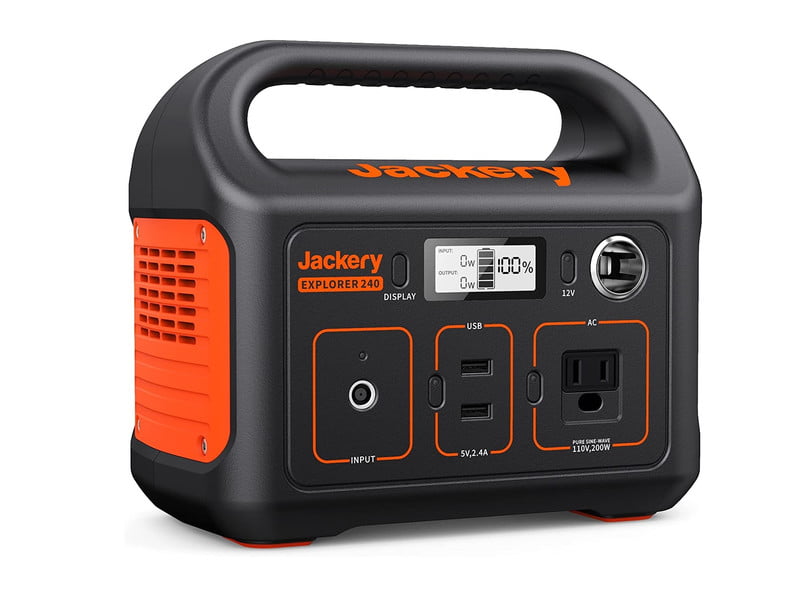
Keep everything you need powered in any situation with the Jackery Portable Power Station Explorer 240 Solar Generator, on sale at Amazon for just $161, marked down from its regular price of $200 for a savings of $39. Generators are a handy piece of equipment to have on hand for those who live in parts of the country that are guaranteed to get plenty of snow this winter season. This pint-sized portable generator packs a punch; perfect for camping, hunting, hiking, or anything else you do in the great outdoors, this generator is powered by the sun itself to keep recharging all your devices. Order it now during the best Black Friday deals to get it in time for the late hunting season!
Buy Now
Generators are invaluable for anyone who loves to camp or travel as well as for homesteaders, and this solar generator from Jackery is highly rated among users. This portable power station is equipped with a 240-watt-hour lithium-ion battery pack that can be recharged via solar panels. It is important to note that this generator does not come with solar panels; you will need to acquire those separately in order to recharge this generator. You can shop companion solar panels from Jackery on Amazon.
This generator features a range of plug-ins and ports to accommodate all of your devices. Included are one pure sine wave AC outlet, two USB-A ports, and one 12V DC car port. Whether you’re charging your smartphone, laptop, digital camera, or other device, get it done quickly and efficiently using this portable generator.
Black Friday is one of the best times to buy new equipment for your base camp. Save big on the Jackery Portable Power Station Explorer 240 Solar Generator when you order it from Amazon for just $161. Marked down from its regular price of $200, you’ll save $39, plus Prime members get free two-day shipping. Not sure if this is the generator for you? Check out great deals on other solar generators here.
Buy Now
More Solar Generator Deals
Looking for something a little different? There are even more great solar generator and Black Friday deals going on today. We’ve rounded up some of the best ones for you below.
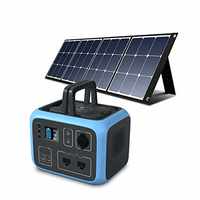
Great for camping or car trips and tailgating. Power station has two AC outlets and comes with a 120-watt solar panel to recharge from household power and/or solar power. Required cables included.
more

Portable power for camping, tailgating, power outages, and emergencies with 600 watts of juice for your gadgets. Also compatible with a solar panel (sold separately) for recharging in the outdoors.
more
Editors’ Recommendations
Ultra Efficient Solar Power Market Capturing Competitive Landscape, Cost Benefits, Trends Strategic Insights By 2026 – Puck77

Overview Of Ultra Efficient Solar Power Industry 2021-2026:
This has brought along several changes in This report also covers the impact of COVID-19 on the global market.
The Ultra Efficient Solar Power Market analysis summary by Reports Insights is a thorough study of the current trends leading to this vertical trend in various regions. In addition, this study emphasizes thorough competition analysis on market prospects, especially growth strategies that market experts claim.
Ultra Efficient Solar Power Market competition by top manufacturers as follow:
Sunway, Yingli Solar, First Solar, Renesola, Tata Power Solar System, Intel, Abengoa Solar, Motech Industries, Areva, Canadian Solar, Solarworld
Get a Sample PDF copy of the report @ https://www.reportsinsights.com/sample/554676
The global Ultra Efficient Solar Power market has been segmented on the basis of technology, product type, application, distribution channel, end-user, and industry vertical, along with the geography, delivering valuable insights.
The Type Coverage in the Market are:
Organic Material
Nonorganic Material
Ultra Efficient Solar Power Breakdown Data by Application
Industrial
Commercial
Ultra Efficient Solar Power market while maintaining their competitive edge over their competitors. The report offers detailed and crucial information to understand the overall market scenario.
Market segment by Regions/Countries, this report covers
North America
Europe
China
Rest of Asia Pacific
Central & South America
Middle East & Africa
Major factors covered in the report:
- Global Ultra Efficient Solar Power Market summary
- Economic Impact on the Industry
- Market Competition in terms of Manufacturers
- Production, Revenue (Value) by geographical segmentation
- Production, Revenue (Value), Price Trend by Type
- Market Analysis by Application
- Cost Investigation
- Industrial Chain, Raw material sourcing strategy and Downstream Buyers
- Marketing Strategy comprehension, Distributors and Traders
- Study on Market Research Factors
- Global Ultra Efficient Solar Power Market Forecast
To get this report at a profitable rate.: https://www.reportsinsights.com/discount/554676
The analysis objectives of the report are:
- To know the Global Ultra Efficient Solar Power Market size by pinpointing its sub-segments.
- To study the important players and analyse their growth plans.
- To analyse the amount and value of the Global Ultra Efficient Solar PowerMarket, depending on key regions
- To analyse the Global Ultra Efficient Solar Power Market concerning growth trends, prospects and also their participation in the entire sector.
- To examine the Global Ultra Efficient Solar Power Market size (volume & value) from the company, essential regions/countries, products and application, background information.
- Primary worldwide Global Ultra Efficient Solar Power Market manufacturing companies, to specify, clarify and analyse the product sales amount, value and market share, market rivalry landscape, SWOT analysis and development plans for future.
- To examine competitive progress such as expansions, arrangements, new product launches and acquisitions on the market.
Our report offers:
– Market share assessments for the regional and country level segments.
– Market share analysis of the top industry players.
– Strategic recommendations for the new entrants.
– Market forecasts for a minimum of 9 years of all the mentioned segments, sub segments and the regional markets.
– Market Trends (Drivers, Constraints, Opportunities, Threats, Challenges, Investment Opportunities, and recommendations).
– Strategic recommendations in key business segments based on the market estimations.
– Competitive landscaping mapping the key common trends.
– Company profiling with detailed strategies, financials, and recent developments.
– Supply chain trends mapping the latest technological advancements.
Access full Report Description, TOC, Table of Figure, Chart, etc. @ https://www.reportsinsights.com/industry-forecast/Ultra-Efficient-Solar-Power-Market-554676
ReportsInsights is the leading research industry that offers contextual and data-centric research services to its customers across the globe. The firm assists its clients to strategize business policies and accomplish sustainable growth in their respective market domain. The industry provides consulting services, syndicated research reports, and customized research reports.
Contact US:
Email: [email protected]
Sales: [email protected]
25 homes in Detroit neighborhood to get solar panels in special project
Detroit homeowner Karl Schachter has always been interested in solar energy, but the cost of the expensive installation always made the switch feel out of reach.
It didn’t seem feasible until Schachter’s neighbor Tammy Black reached out to him about an affordable solar panel option, which was through the grassroots organization Community Treehouse Center Detroit and the company Global Treehouse Initiative 2, both led by Black.
Schachter, 72, has now been using a hybrid solar power system for two years. He provides space for his friends to live with him. They are all on fixed incomes, so the solar energy installation has created a positive impact.
“It has a pretty big offset on the electric part of our utility bill,” Schachter said. “This is judging from several bills that we’ve been given in the past that we are saving anywhere between $25 and $35 a month on electricity.”
The Community Treehouse Center Detroit was created to assist residents like Schachter help the environment and have access to solar power energy, which lowers gas and electric bills for Detroit residents. The project is led by Black, who was inspired by the Pete Nelson Treehouse Project that creates solar-powered community centers.
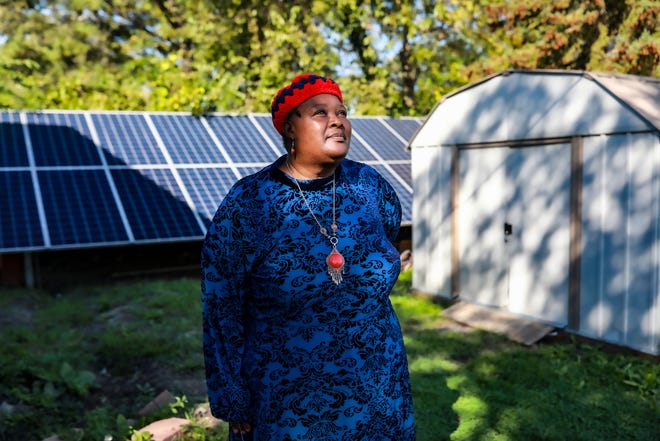
“In the community, renewable energy is not afforded by everyone because it’s expensive,” said Black, 58, of Detroit. “So why can’t it be in low income areas? Why can’t it be the middle class who wants it and who needs it? Some of my seniors, they’re making the decision of do I pay my DTE bill or do I get my medicine? That shouldn’t be (choices) that they have to make.”
The project’s goal is to provide 25 Detroit homes in the Jefferson Chalmers neighborhood with solar panel installation, upkeep and education. So far, 19 homes have received a hybrid solar panel system, which provides a connection to solar energy and backup power.
More:Detroit neighborhood with some high profile residents is changing: Here’s how
More:Shoe Doctor sees success in Detroit cleaning 85,000 shoes a month
And it’s not just about saving money for the residents. It’s also about helping the environment.
“There are some people, like myself, who are motivated by more long-range concern — not simply saving money on the electric bill, but also making this world livable in terms of how energy gets used and produced,” said Schachter who hopes to add more solar panels to his home in the future.
Black’s solar power company, Global Treehouse Initiative 2, aims to educate youths and the community in the fundamentals of renewable energy. The company focuses on providing affordable solar options for residential homes, while another company will focus on the nonprofit’s commercial projects.
A team of young people — Black calls them “my babies” — is focused on flipping houses, community gardening and fundraising. Kids will have the opportunity to follow a Realtor through the house flipping process from renovating the home to staging the home to sell.
“Once they put (the house) back together, they’re going to get 5% of whatever that house sells for,” Black said. “They can work together as a team, and this gives them collaboration skills.”
Bringing solar energy to Detroiters
Jefferson Chalmers, located on Detroit’s east side, has a country feel with a lot of open space, Black said. The houses are spaced out. There are spaces to create gardens. These features attracted Black to live in the neighborhood.
Over the years, she began to crave reducing the stress of her neighbors by lowering their energy bills, creating a community and educating everyone in her path.
“When you can see people not stressed about their living, or smiling sometimes, when you know they wouldn’t smile,” Black said. “My living is not in vain when I see that. It makes me feel great to know that when I leave this Earth, that I have made an impact on somebody’s life.”
Residents who are a part of the nonprofit’s program have to pay $2,000, and the rest is covered by the nonprofit. It has taken the nonprofit $250,000 to complete this project, with a $25,000 donation from Hammond Climate Solutions’ Solar Moonlight Program. With the help of the city’s inspectors, all of the 25 homes should have solar power by the end of November. There are also plans to continue with fundraising to provide a backup battery for the participating residents.
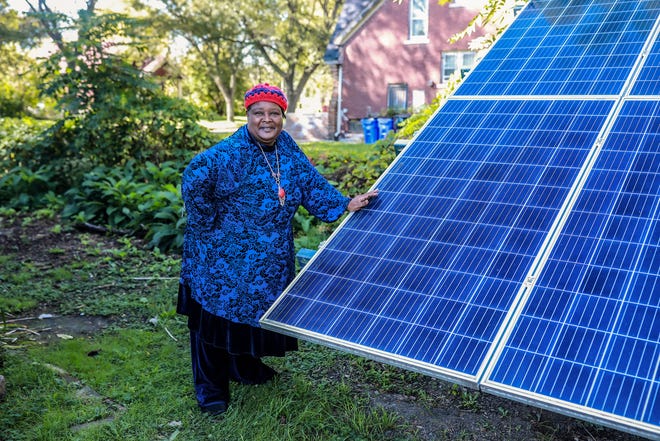
“We’re going to start fundraising to get the panels for the power station and the actual housing for the components that we need to make this happen,” Black said. “We’re hoping that people who are really into renewable energy would be kind enough to donate this.”
The typical cost of a solar panel installation is between $13,260 to $17,940, according to Energy Sage. And it takes about 10.52 years to receive an energy payback on the initial investment. In Michigan, about 8,000 customers are using some form of distributed generation like solar energy, according to the Michigan Public Service Commission. The most customers in Michigan with solar energy installed are in Wayne, Washtenaw, Oakland and Isabella counties, according to that same report from 2019.
As solar energy grows, University of Michigan lecturer Sarah Mills and Michigan State University Extension educator Brad Neumann wrote a guide titled “Planning and Zoning for Solar Energy Systems: A Guide for Michigan Local Governments,” which aims to assist local government officials and planning commissioners in making space for solar energy options in neighborhoods and rural areas.
“Solar energy, as a renewable energy, it’s reducing our reliance on fossil fuels,” said Mills, who is a senior project manager and is a lecturer within the Graham Sustainability Institute. “At the neighborhood level, residents who have solar energy are able to produce some of their own power.”
Michigan, as we know, produces many snowy and dreary days. Mills said that these weather conditions can cause solar panels to produce less power since the panels are on the top of the roof. But even on those days, 70% of the power will come from solar in Detroit compared with a 100% solar energy day in Phoenix, Mills said.
“One of the things that I’m looking forward to is solar panels that are distributed throughout communities, throughout a neighborhood, really, have the opportunity — if we’re able to connect the grid right — to allow for some additional resilience,” Mills said. “If there’s a storm, and we know that there will be increasing storms from climate change, and trees take down some power lines, having this energy production distributed throughout the community really provides an opportunity for resilience.”
Black said the organization has plans to create a power station in the neighborhood, as well, bringing about 300 solar panels to a piece of land. This solar panel farm will operate during DTE Energy’s peak time — the time in which more energy is used between the hours of 3 p.m. to 7 p.m.
Global Treehouse Initiative 2 is planning outreach in other communities once it has finished the installation of solar panels in the Jefferson Chalmers neighborhood.
A real treehouse
The Community Treehouse Center is living up to its title. The project, birthed out of the nonprofit called the Manistique Community Treehouse Center, is set to turn into a physical large treehouse where community members and individuals with disabilities can gather in an inclusive and safe space.
“The treehouse will be a place where you can come and be yourself,” Black said. “You don’t have to worry about color of your skin, you don’t have to worry about your physical abilities. Everybody, when they get into this space, is equal. And it’s a space for relaxation; it’s a space for creativity; it’s a space for health.”

The 700-square foot building will be fully solar powered, with wheelchair accessible features. There is a long list of programming that currently takes place, from gardening to assisting seniors, and it will be available at the treehouse once it is built. Mental health professionals will also be on-site for people experiencing depression and anxiety, or for people who might just need someone to talk to.
The solar project joins other projects in the Jefferson Chalmers neighborhood. The Neighborhood Grocery continues its construction phase, which Black’s nonprofit is investing $10,000 in, and the Neighborhood Resource Hub continues to provide education to the area.
Contact staff writer Chanel Stitt on Twitter: @ByChanelStitt. Become a subscriber or gift a subscription.

